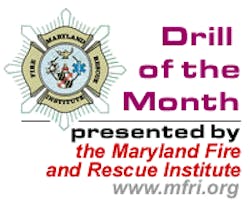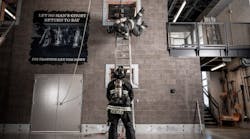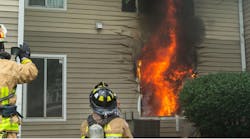TOPIC:
UNDERSTANDING THE 2008 EMERGENCY RESPONSE GUIDE (Revised 6/2010)
TIME REQUIRED:
Two Hours
MATERIALS:
APPROPRIATE AUDIO-VISUAL MATERIALS, 2008 EMERGENCY RESPONSE GUIDEBOOK
REFERENCES:
2008 EMERGENCY RESPONSE GUIDEBOOK, U.S DEPARTMENT OF TRANSPORTATION
-----------------
PREPARATION: MOTIVATION:
Being able to use the Emergency Response Guidebook quickly and correctly can make a difference in the safe outcome of a hazardous materials incident for the first responders. Being on the scene is not the time to be familiar with the content and application of the guidebook.
OBJECTIVE (SPO): 1-1 The individual will demonstrate a basic understanding of content and use of the 2008 Emergency Response Guidebook.
OVERVIEW: UNDERSTANDING THE 2008 EMERGENCY RESPONSE GUIDEBOOK
• Guidebook Layout
• Guide Page Layout
• Special Sections
• Guidebook Use
UNDERSTANDING THE 2008 EMERGENCY RESPONSE GUIDEBOOK
SPO 1-1 The individual will demonstrate a basic understanding of content and use of the 2008 Emergency Response Guidebook.
EO 1-1 Demonstrate an understanding of the Guidebook including the various sections.
EO 1-2 Demonstrate an understanding of the Guide Page in the Guidebook.
EO 1-3 Demonstrate an understanding of the special sections of the Guidebook including the placard tables, vehicle identification charts, evacuation information, and chemical/biological/radiological agents section.
EO 1-4 Demonstrate the use of the Guidebook through classroom exercises.
NOTE: THIS DRILL MAY BE USED TO MEET PART OF THE ANNUAL HAZARDOUS MATERIALS REFRESHER REQUIREMENT IN 29 CFR 1910.120(q)(8)
While this Guidebook is designed for use with hazardous materials in transport, it can also be used for hazardous materials incidents at fixed facilities. At fixed facilities; however, there is no standardized requirement for placards or markings.
The information in the Guidebook is designed for use during the initial response. It should be used as initial reference source until more specific information can be obtained. The intended use is for the first 30 minutes of an incident.
This drill should be interactive in nature with the students following along in the Guidebook as the various items are discussed.
I.. GUIDEBOOK LAYOUT (EO 1-1)
- Inside Front Cover - shipping documents
- Page 1 - how to use the Guidebook during an incident involving dangerous goods
- Page 2 - ERG 2008 user's guide
- Pages 3 to 5 - guidebook contents
- Page 6 - safety precautions
- Pages 7 to 13- who to call for assistance
- Page 14 - hazard classes
- Pages 15 to 17 - introduction to table of placards
- Page 18 - rail car identification chart
- Page 19 - road trailer identification chart
- Pages 20 to 23 - hazard identification codes
- Pipeline transportation
- Pages 27 to 96 - numeric list (highlighted products require referral to isolation distances table)
- Pages 97 to 165 - alphabetic list (highlighted product require referral to isolation distances table)
- Pages 168 to 291 - guide pages
- Pages 293 to 347 - initial isolation and protective action distances
- Pages 348 to 349 - protective clothing
- Pages 350 to 351 - water reactive materials & vapor control
- Pages 350 - fire and spill control
- Pages 352 to 355 - chemical/terrorist use of chemical/biological/radiological agents
- Page 356 to 364 - glossary
- Inside Back Cover - emergency response telephone numbers
- GUIDE LAYOUT (EO 1-2)
- General Arrangement of Guides
- Guide 111 - mixed load/unidentified cargo (use when no other information is available)
- Guides 112 and 114 - explosives
- Guide 113 - flammable solids-toxic
- 4 Guides 115 to 126 - gases
- Guides 127 to 132 - flammable liquids
- Guides 133 to 134 - flammable solids
- Guides 135 to 136 - substances-spontaneously combustible
- Guides 137 to 139 - substances-water reactive
- Guides 140 to 144 - oxidizers
- Guides 145, 146 & 148 - organic peroxides
- Guide 147 - Lithium Ion Batteries
- Guides 149 to 150 - substances-self-reactive
- Guides 151 to 157 - substances-toxic
- Guide 158 - infectious substances
- Guide 159 - substances-irritating
- Guide 160 - halogenated solvents
- Guides 161 to 166 - radioactive materials
- Guide 167 - fluorine
- Guide 168 - carbon monoxide
- Guide 169 - aluminum-molten
- Guide 170 - metals
- Guide 171 - substances-low to moderate hazard
- Guide 172 - gallium and mercury
- Guide Page Sections
- Potential hazards
- Fire or explosion
- Health
- Most serious listed first in section
- Public safety
- General information
- Protective clothing (read the entire section before taking action; clothing requirements may be different for spill or fire)
- Evacuation (if not highlighted in numeric or alphabetic lists)
- Emergency response
- Fire (may identify special agents needed)
- Spill or leak
- First aid
- Potential hazards
- General Arrangement of Guides
- SPECIAL SECTIONS (EO 1-3)
- Table of Placards (pages 16 and 17)
- Use only when the ID number (four digit) is not visible
- Refer to the guide number (three digit) adjacent to the placard
- Attempt to safely obtain more specific information about the product(s)
- Rail Car Identification Chart (page 18)
- Use when placard is not visible
- Refer to guide number adjacent to silhouette
- Attempt to safely obtain more specific information about the product(s)
- Road Trailer Identification Chart (page 19)
- Use when placard is not visible
- Refer to guide number adjacent to silhouette
- Attempt to safely obtain more specific information about the product(s)
- Table of Initial Isolation and Protective Action Distances (pages 298 to 347)
- Know the ID number and name of the material (table arranged by ID number rather than name)
- Note the wind direction
- Determine if it is a small spill or large spill (single small package, small cylinder, or small leak in large package for small spill)
- Determine if it is day (between sunrise and sunset) or night
- Determine initial isolation distance (distance in all directions from center of release)
- Determine protective action distance (distance downwind from center of release; width is half of distance)
- Consider public safety when determining size of spill and take a conservation approach
- Chemical/Biological/Radiological Agents (pages 352 to 355)
- Differences between chemical, biological, and radiological agents
- Indicators of possible chemical incident
- Indicators of possible biological incident
- Indicators of possible radiological incident
- Personal safety considerations
- Table of Placards (pages 16 and 17)
- GUIDEBOOK USE (EO 1-4)
- Look up ID number 1993, find name of product and guide number, go to guide page, and read fire or explosion information (Note that there is more than one product with the same ID number)
- Look up Sarin, find ID number and guide number, go to guide page, read health and protective clothing information, go to table of initial isolation and protective action distances, and read information for small spill during the day (note that there are several distances for the same product)
- Look up the guide page when the only information known is that the placard is blue
- Look up the guide page when the only information known is that the trailer is round with rib supports
- You respond on an alarm for a person that is not feeling well. Upon arrival at the scene and during your initial patient assessment, you note that the patient is experiencing unexplained water-like blisters and a rash.
REVIEW:
UNDERSTANDING THE 2004 EMERGENCY RESPONSE GUIDEBOOK
- Guidebook Layout
- Guide Page Layout
- Special Sections
- Guidebook Use
REMOTIVATION:
The emergency scene should not be first time that you have looked at the Emergency Response Guidebook. You should be familiar with the layout and content prior to the emergency. You should also be aware that you may be dispatched on an alarm, especially a medical emergency that may seem routine and turn out to be a hazardous materials incident with you in the middle of the release area.
ASSIGNMENT:
Read the Guidebook and become familiar with the contents and organization.






